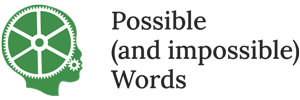Home
Helping parents and children
What you can usefully do to help
Three simple questions about your child
Some common worries
What I can do by my training and experience. I try to make my therapy FUN, give children the experience of success, minimise the sense of failure, and build CONFIDENCE
Priorities
The child who cannot be understood by other children is isolated and not learning what can only be learnt from peers. Prolonged lack of experience playing with other children can have lifelong consequences. The situation needs to be dealt with promptly. This is where speech and language therapy comes in. What it is and isn’t. What are the big questions?
I run a private practice. But I do so on the basis of need. So my charges are on a sliding scale.
I treat children, young children, teenagers, young adults. They all have particular needs at particular times.
My clinic is in central Lambeth, culturally a very distinctive part of London. My clinic is easy to get to, only a short walk from Lambeth town hall which is almost opposite Brixton tube station, at the end of the Victoria line. Brixton overground station is only another short walk.
With teenagers and young adults I can work remotely if this is what is wanted. But with small children this does not work in my experience. The treatment has to be face to face. This allows me to adapt to the child, using whatever the child wants to use, making that fit the therapy, rather than the other way round. I can then take full account of looks and body language
Recovery
One is a clearly defined object of investigation,. The other is much less clear with the odd word accidentally left out, or with sounds or words in the wrong order, or just wrongly saod.
Part of the linguistics of English is the way sounds are formed into words, what is known as the ‘phonotactics’. This is specific to English, even to a particular variety of the language. Some people have three syllables in the word, strawberry. I have just two with the E sound not pronounced at all, and with the B and the R forming what is known as a ‘cluster’.
phonotacticsEnglish
For the sake of precision, speech and language therapists use the International Phonetic Alphabet or IPA to describe the way children talk, steering clear of the eccentricities of English spelling
Good English? Most linguists think that there is no such thing. Or did Shakespeare not know about this?
One frequently made diagnosis involves either of the terms Apraxia or Dyspraxia. It is usually clear what is meant by these terms. But they are not well-defined. One of the problems with the commonly confused defintions is that they do not take account of the fact that human language evolved and has to be learnt generation by generation. The amazing thing is that humans learn to talk at all. It’s a considerable feat.
Treatment
Treatment is a team effort. Only parents can observe subtle and detailed changes from one day to the next, new interests, expressions, words, or saying things in a more grown up way than previously. My job is to analyse what I can see and what I am told.
Your work may include keeping a diary as a sensitive and accurate measure of a child’s language, giving your child your time, conversation, talking ti your child in a special way, letting him or her take the initiative.
My work involves diagnosis, assessment, counselling, treating the child’s issues in various ways, as by Possible words therapy, particular issues such as those involving and Z, being positive and making things fun, collaborating in stories, songs and devising new bits of songs to help with whatever we are working on, taking account of what may be going on in the child’s mind., which
Our work often involves a checklist of all the possibly relevant factors, covering the whole range of ages from toddlers to teenagers, taking account of both exceptionalities and norms, which may be no more than that, distinguishing between what the child says and what her or she appears to understand, keeping up to date, detailed records, and of course, deciding whether and when some treatment is necessary and appropriate.
Speech and language therapy as a profession.
Structure
Literature, poetry and political discourse were once considered the main reason for any interest in language. But for almost 400 years now it has been recognised that there is interest in how speech and language develop in children and how the process here sometimes goes wrong. We experience language in conversation.
There are conventions about taking turns to talk, These conventions are sometimes regarded as rules. But the rules of conversation, if this is what they are, are quite different from those which make PSKETTI for spaghetti not a possible word of English.
Conversation
Literacy
Most children with problems learning to read and write previously had or still have a problem with speech and language, suggesting that there may be an underlying commonality. The bare necessities of the processes involved are worth delineating and tabulating.
Approach
In work with children there is a long tradition of trying to make this enjoyable rather than painful. There is also an emerging idea that it is necessary to take account of the process by which speech and language evolved.
About Doctor Aubrey Nunes
Speech and language therapist, with a lifelong fascination with speech and language
Personal history of speech, language, and literacy delay
Respect for children and diversity
Three degrees, a qualification in speech and language therapy, and on-going research
Discovery of a long lost tradition of therapy involving the notion of ‘possible words’
References
Should you want to get in touch and discuss anything further, please use the details on this page.
Contact
A full compilation of references used throughout this site.

